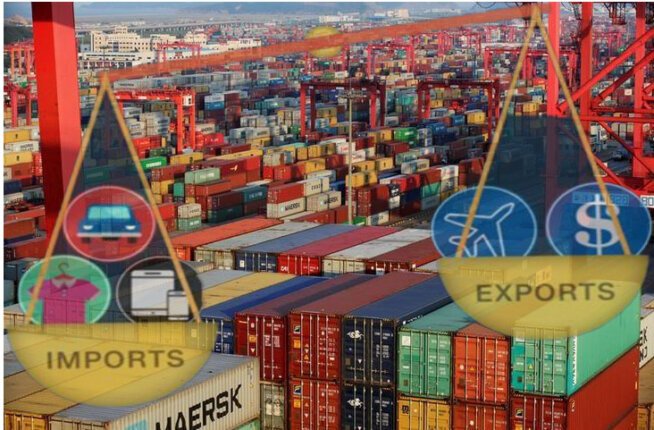Islamabad — Pakistan’s trade deficit widened sharply by 44% in July, reaching $2.7 billion, driven by a sudden jump in imports. Planning Minister Ahsan Iqbal, however, expressed confidence on Tuesday that the increase is only temporary and will be offset in the coming months by stronger exports.
Speaking at the launch of the first monthly development report for FY2025-26, Iqbal said the recent surge in imports was linked to higher purchases of raw materials, which could support export growth. He also highlighted that Pakistan now enjoys the lowest US tariffs in the region, urging exporters to capitalise on the opportunity by targeting foreign markets.
The Pakistan Bureau of Statistics (PBS) recently reported the July trade gap, noting that the jump could partly be due to importers delaying shipments to benefit from reduced tariffs introduced in the new fiscal year. The government cut import duties in line with conditions agreed with the International Monetary Fund (IMF) and World Bank.
Iqbal explained that the trade liberalisation plan had been adjusted to focus on items that directly contribute to export growth. He added that macroeconomic stability has improved, with exports rising 16.9% in July to $2.7 billion, while remittances climbed 7.4% to $3.2 billion — a sign of renewed confidence among overseas Pakistanis.
Regarding the US trade agreement, which set zero tariffs on over 4,100 lines in exchange for a 19% additional customs duty, Iqbal said the arrangement should be seen as a long-term opportunity for both exports and foreign investment. Chief economist Dr Imtiaz Ahmad echoed this, saying the deal could encourage regional investors to set up production in Pakistan for export to US and EU markets, though final rules of origin remain pending.
The development report also showed positive fiscal trends: the budget deficit dropped to 5.4% of GDP in FY2025, down from 6.9% the year before, and the external sector recorded a $2.1 billion current account surplus. Development spending hit a record Rs1.068 trillion, or 98% of the annual Public Sector Development Programme (PSDP) allocation.
Iqbal criticised the finance ministry’s budget release strategy — which allocates 40% of funds in the last quarter — saying it leads to waste and strains resources. He proposed limiting final-quarter releases to 30%, with the majority disbursed earlier in the year.




